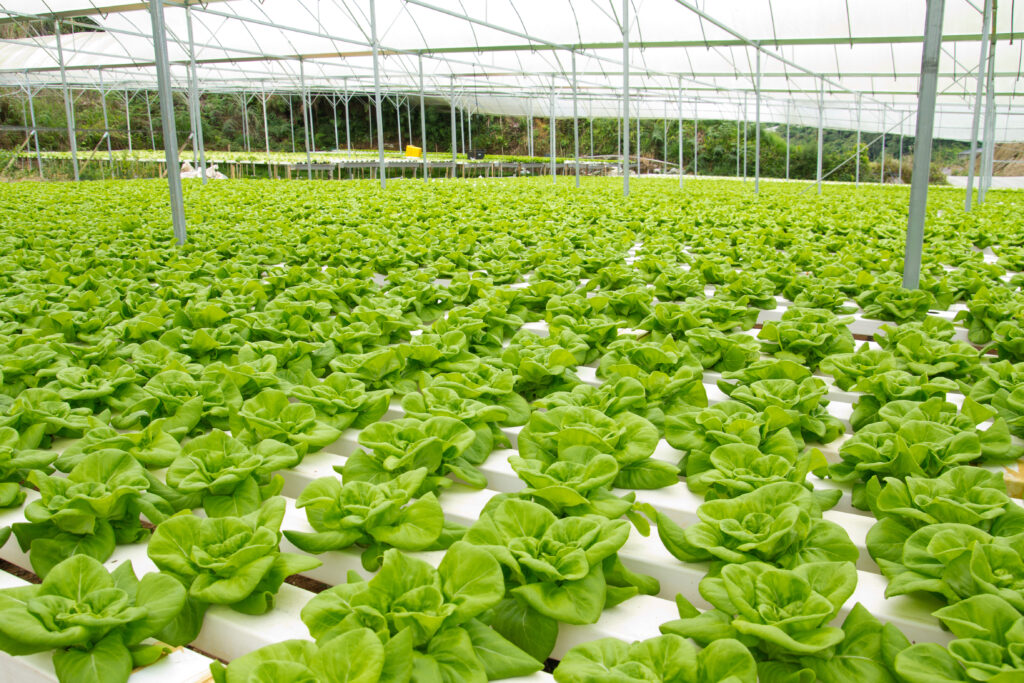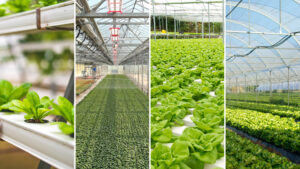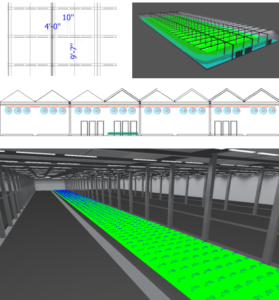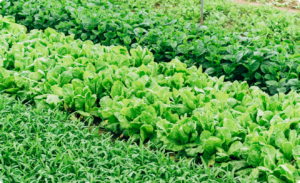
September 14, 2023
Controlled Environment Agriculture (CEA) has revolutionized the way we grow crops, enabling year-round cultivation of various plants regardless of external weather conditions. Leafy greens, with their rapid growth and high demand, make for an excellent starting point for beginners venturing into CEA. In this guide, we will walk you through essential considerations, daily light integral, growth stages, and the significance of photometric mapping when cultivating leafy greens in controlled environments.
1. Things to Consider Before Starting Your Grow Operation:
Before embarking on your leafy green cultivation journey in a controlled environment, it’s crucial to assess a few critical factors:
- Space and Facility: Determine the size and layout of your growing space. Will you be using a greenhouse or indoor site? New or Retrofitted building? A repurposed structure can save money at the start but could require more time and resources later depending on the site.
- Growing System: Decide on the cultivation method, such as hydroponics, aeroponics, or aquaponics. Each method has its advantages and challenges, so choose the one that aligns with your resources and goals.
- Electrical Supply: Make sure there will be enough electrical supply to the facility. During the buildout and equipment planning phase, keep track of energy requirements for equipment and contact your power company ahead of time to determine if more power is available.
- Benching/Racking: If using a greenhouse how high and with what spacing will you construct your benches or hydroponic trays? If you are using vertical multi-tier systems, you will need to consider accessibility and airflow within the racking structures.
- Lighting: Selecting the right lighting system is paramount. LED lights are often preferred due to their energy efficiency and reduced heat emission. Consider the light intensity, spectrum, and coverage to meet the needs of leafy greens.
- Nutrient Solution: Understanding the nutritional requirements of leafy greens is essential. Prepare a well-balanced nutrient solution that caters to the specific needs of the plants.
- Temperature and Humidity: Maintain optimal temperature and humidity levels to ensure healthy growth. Leafy greens generally thrive in cooler conditions, but specific temperature ranges may vary depending on the variety.
- Pest and Disease Management: Preventive measures like proper sanitation and integrated pest management are crucial to avoid infestations and diseases that can harm your crops.

2. Daily Light Integral (DLI)
DLI refers to the cumulative amount of photosynthetically active radiation (PAR) that plants receive in a single day. It plays a crucial role in determining the growth, development, and overall health of leafy greens. For leafy greens, the DLI ranges from 7 to 16, but can be much higher if CO2 supplementation is used and humidity is well managed. Follow these steps to ensure the right amount of light is hitting your leafy greens.
A. Determine the Required DLI: Look up the DLI for your chosen leafy greens on university extension websites, or by contacting the seed producer.
B. Light Duration and Intensity: Adjust the duration and intensity of light exposure to meet the desired DLI. For greenhouse operations this requires knowing the amount of natural DLI that is already available. For more information on steps to calculate supplemental lighting needs for greenhouse operation, check out this article with sample calculations.
C. Monitoring: Regularly monitor DLI levels using light meters or sensors. This data will guide adjustments to your lighting setup for optimal results.
3. Difference Between Growth and Finishing Stages
The spectrum of light applied to leafy greens affects how they will grow. In order to maximize growth, yield, and marketability of your leafy greens consider using different spectrums for the growth stage and finishing stage of production. Check out our Leafy Plants Application page to learn more.
4. The Importance of Photometric Mapping

Photometric mapping involves the precise measurement and mapping of light intensity within the growing area. This technique has several benefits for leafy green cultivation:
- Uniformity: Photometric mapping ensures even light distribution throughout the growing area, preventing uneven growth and optimizing yield.
- Efficiency: By identifying areas with excessive or insufficient light, you can adjust your lighting setup for energy efficiency while maximizing plant health.
- Data-Driven Decisions: Photometric data empowers you to make informed decisions about light placement, fixture spacing, and light spectrum adjustments.
Download our Lettuce Application Note to learn more about how photometric mapping impacts your grow.

5. Conclusion
To summarize, embarking on a journey into controlled environment agriculture to grow leafy greens requires careful consideration of various factors. From selecting the right lighting system and growing medium to understanding growth stages and utilizing photometric mapping, a well-informed approach will lead to successful cultivation and abundant harvests. As you gain experience and knowledge, you’ll be well-equipped to expand your CEA operation and explore other crops in the controlled environment. Happy growing!

Tell us about what you grow and how you grow it and one of our friendly, helpful pros from JumpLights® will be in touch with you soon.






